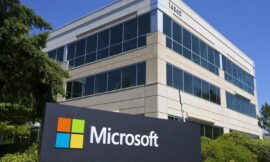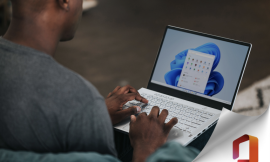Gartner’s Tuong Nguyen weighs in on Apple’s announcements at WWDC 2020, virtual conferences, and augmented reality.
TechRepublic’s Karen Roby spoke with Gartner analyst Tuong Nguyen about Apple’s WWDC 2020. The following is an edited transcript of their conversation.
Tuong Nguyen: [At the keynote] you miss out on things like the audience clapping and cheering–that wasn’t there. But even digitally, on Twitter, there wasn’t the flurry of people tweeting like, “Oh, people are lining up. We’re waiting for the doors to open.” So a lot of that energy was missing.
That was reflected in the announcements we saw themselves. What I mean is, although we saw or we heard about a lot of new features and functionalities, the trend that has been persistent over both the spring and fall Apple events has been that this is really about incremental improvements on existing functionality. So for example, “Hey, here’s a new, better way to organize your applications,” manipulating widgets, how call notifications are handled–nothing I would think is groundbreaking… it’s just, “Oh, we’re making these experiences better,” which is Apple’s forte.
SEE: Apple iOS 14: A cheat sheet (free PDF) (TechRepublic)
And on top of that, a lot of the features that we saw–and I’m sure a lot of people have commented on this–have been available for non-Apple users on other platforms and devices. It’s not exactly new, it’s… let’s say presented in a different and potentially better way. So, that having been said, there were a few things that caught my eye, and it caught my eye in one of two ways.
One, it was either unique to me in terms of never having seen the feature before, or that feature hasn’t really been widespread or widely used. The other one–again, this is what Apple is great at–is the presentation… how the feature is delivered. They take existing technology, existing features, ideas, you have it, but they implement it in a way that’s simple and elegant and useful the way that consumers, you and I–not tech geeks and tech enthusiasts–a way that consumers can understand.
Karen Roby: Was there anything in terms of hardware or software focus that you expected, didn’t expect, or what do you think in terms of those announcements?
Tuong Nguyen: I’ve been doing this a long time, and especially with Apple, I try to avoid expecting anything, because, again, part of that experience is they’re really good at surprising us. Not only consumers, but the industry more broadly speaking. I try not to expect anything, but I can tell you some of the interesting things that I saw that got my interest piqued, despite having done this for so long.
Number one on that list for me, and the reason it’s number one is because I do a lot of research into augmented reality, is App Clips. Both those ideas I mentioned before apply here. Apple has taken this feature… it’s already been available elsewhere, but they picked out specific examples that would be recognizable to the consumer in order to promote this idea to be adopted more broadly. The idea is, I think they used scooter rental as well as a digital parking meter. As anyone who’s tried any of those things, it’s very inconvenient. First you download, and then you have to register for it.
App Clips alleviates this barrier. It’s a small download, so you just click on something–it’s usually a QR code or via NFC it’s tied to Apple Pay and Apple Sign-On, so you can pay and be on your way. Because you’re already logged in, you have the payment mechanism, you click on it. “I’m done. I have my scooter.” “I’m done. I parked my car. Now I can go where I need to go.” Where does that tie to augmented reality? I’ve always been a strong believer that e-commerce would be a big part of Apple’s augmented reality offering. And so, App Clips, I think that is a peek into how they’re going to deliver that AR experience.
They didn’t speak about that in explicit terms, but reading between the lines, this is what they’ve done in every event. They kind of give you a peek at something and you’re like, “Oh, that’s neat.” And then, three, four, five years later, fast forward, they tie it together like, “Oh, there we go.” That’s why I’m so excited about App Clips.
SEE: Quick glossary: Augmented reality (TechRepublic Premium)
Karen Roby: What do you think in terms of the developers? I was just kind of monitoring different social media strands, and some people say they felt like because of the way it was set up this year without all of the rah-rah, that maybe for developers, it kind of brought some of them back into the fold to be a little bit more excited about things vs. just being so concerned about what it is that they’re unveiling. Do you feel like that at all?
Tuong Nguyen: I think at the beginning, Tim [Cook] talked about how it made it inclusive. So now everyone can join as opposed to the few people who were invited, which that venue can only hold so many people, so I think that was good, making it more inclusive. And yeah, to your point, because we don’t have–maybe we’ll call it the hype surrounding it–it gives more time and energy to focus on the content itself. So instead of being, I don’t want to say distracted, but that’s essentially what happens when there’s so much hype.
So you’re trying to really kind of pick out these exciting things to make sure that the audience claps or cheers. Now you say, “Look, we have some really cool things for you. Just pay attention.”
Karen Roby: What do you think about people moving from Chrome? A lot of people are saying, “This is going to be the year that we’re going to be all moving away from Chrome now with all this.” What do you think there?
Tuong Nguyen: Every year is the year that we move away from Chrome. Every year is the year we move away from Android and Windows. I tend to be a little bit more skeptical about that because despite all the great advances we’ve made, all these platforms, all these pieces of software are very distinct in the way you interact with them. Personally, I use both an iOS and an Android device on a daily basis. And if you do too, you’ll recognize there’s a slight mental cognitive shift you have to make when you go from device to device. This swipe doesn’t mean the same thing on both your phones.
And the analogy I like to make here is driving stick vs. automatic. Even if something awesome happens with automatic, I don’t necessarily know if all the stick shift drivers are going to start moving en masse like, “Oh, I just realized how great automatic is.” It’s like, “No, I drive a stick shift, and I like it for specific reasons.” So that’s why I don’t think people are going to move en masse. I think the value there is innovation and competition. Your competitor upped the ante, you need to up the ante now. And the benefit is to the consumers, not so much me switching back and forth.
Karen Roby: Was there anything that you were hoping–now, we’re still in the middle of this–to hear? Any kind of tone that you hoped to be set that they haven’t done yet?
Tuong Nguyen: As I mentioned before, I’m big on augmented reality. I always want to hear more, but I think we’re a few years out. So what Apple’s probably going to do is tease us with it. A little bit here, a little bit there, maybe hear something come fall. I’ll highlight the fact that they underscored a lot of the presentation with privacy. I think this is a big issue for a lot of people, and it’s the way that Apple differentiates itself from a lot of products and services that consumers are exposed to today. And it’s important because it impacts how we view the Apple brand, and it’s underscored every time. This is happening more often than we would probably like it, but every time there’s a breach of privacy or security, every time that happens, Apple can say, “See? That’s why you should use Apple.” And that’s important.
But the flip side to that seems to be, in practice, while consumers say they’re concerned about privacy and security, you continually see again, us as consumers, acting in ways that are counter to what we’re actually saying. I’m sharing too much stuff on social media… I’m clicking on random links that I shouldn’t be. But again, I think it is a good point for Apple to drive home as a differentiator from basically all the tech giants out there and other products and services we use.
Karen Roby: Do you feel like with them having to pivot, as everybody has had to when it comes to having conferences and things like this because of our new way of living right now, how do you see that this is going to change things going forward? Apple has a tendency to set the tone, and others will follow in many ways, so what do you see down the line for developer conferences and things like this going forward?
Tuong Nguyen: Assuming that we’re going to have to shelter in place for longer, as well as additional times in the future, I would expect that Apple is furiously thinking of ways to improve upon that engagement via a virtual conference, virtual summit. The rest of the industry, I think, will be looking to them to see how to do it best, because Apple has mastered or is the master of that experience. Other conferences I expect to see mirror what we’ve seen so far, just in terms of the way it’s done, having these kinds of pristine environments.
SEE: The new normal: What work will look like post-pandemic (TechRepublic Premium)
I don’t know if you watched the feed, but a number of the backgrounds were kind of very pristine, yet with kind of a futuristic feel to them. I expect to see a number of vendors try to replicate that. Not to say that that’s the best way yet, but it’s something I imagine Apple’s furiously working on, and will probably be leading in terms of, “Here’s how you want to present to your customers. Simple, elegant, high value.”
Number one was the electric vehicle charging. Simple, elegant, high value. You have a charge on your vehicle, your device knows it, and you’re traveling from LA to San Francisco. You don’t need to figure out where the stops are or when you need to stop to fuel up–it maps it out for you, and it tells you which are the compatible stations. Simple, elegant, high value. The other one was adding your license plate to your device. Right now it’s in China, so there are certain days that you can drive into the city for pollution reasons, I believe. But this exists in other countries as well.
And so, some people might dismiss that as some kind of frivolous feature saying, “It’s not that difficult to figure out which days I can drive,” but the idea here is you can make the same argument about a paper map. Why do you use GPS? There’s a perfectly good paper map right there, and it’s not hard to use. The idea is its ease of use and decreasing cognitive load. Simple, elegant, useful.
Also see

Image: Apple
Source of Article




